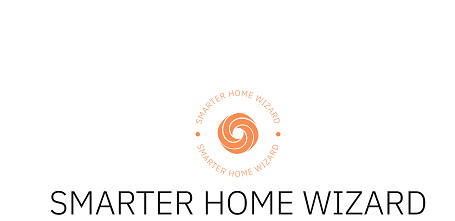Home Assistant is a powerful platform that brings together various smart devices into a unified system, offering seamless automation and control. However, sometimes the automatic detection of sensors and devices can fail, leading to frustration. This guide aims to help you troubleshoot and resolve these issues, ensuring your smart home operates smoothly. From checking network connectivity to verifying sensor compatibility, we’ll walk you through each step to get your Home Assistant setup back on track. Whether you’re a beginner or an experienced user, these tips will help you maintain a reliable and efficient smart home environment.
Introduction
Home Assistant is an open-source home automation platform that lets you control all your smart devices from one place! 🏡✨ It focuses on local control and privacy, meaning your data stays in your home. 🌐🔒 You can integrate over 1,000 devices and services, from lights 💡 to thermostats 🌡️, and create powerful automations to make your life easier. 📱🔧 Whether you use voice commands with Alexa or Google Assistant 🎤, or control everything through the mobile app 📲, Home Assistant makes your smart home truly smart! 🤖🏠 Join the community and start automating today! 🚀💡💡
Home automation has revolutionized the way we interact with our living spaces, making our homes smarter and more efficient. However, even the most advanced systems like Home Assistant can encounter issues. One common problem users face is when Home Assistant doesn’t autodetect sensors. This guide will help you troubleshoot and resolve this issue, ensuring your smart home runs smoothly. 🏡✨
Understanding the Problem
Home Assistant is designed to automatically detect and integrate various sensors and devices. When it fails to do so, it can be frustrating. This issue can stem from several factors, including network problems, configuration errors, or compatibility issues. Let’s dive into the steps you can take to troubleshoot and fix this problem. 🔍🛠️
1. Check Network Connectivity 🌐
Ensure that all your devices, including the Home Assistant server and sensors, are connected to the same network. A stable and strong Wi-Fi connection is crucial for seamless communication between devices.
- Restart your router and Home Assistant server to refresh network connections.
2. Verify Sensor Compatibility 📋
- Not all sensors are compatible with Home Assistant. Check the official Home Assistant documentation to ensure your sensors are supported.
- If your sensor is not listed, you may need to use custom configurations or third-party integrations.
3. Update Home Assistant and Integrations 🔄
- Make sure you are running the latest version of Home Assistant. Updates often include bug fixes and improvements that can resolve detection issues.
- Update any relevant integrations or add-ons to their latest versions.
4. Review Configuration Files 📂
- Incorrect configurations can prevent sensors from being detected. Review your configuration.yaml file for any errors or missing entries.
- Use the Home Assistant configuration checker to validate your configuration files.
5. Enable Discovery Component 🔍
The discovery component in Home Assistant helps automatically detect new devices. Ensure it is enabled in your configuration.
Add the following to your configuration.yaml file if it’s not already there:
discovery:
6. Check Sensor Power and Connectivity 🔋
- Ensure that your sensors are powered on and within range of your network.
- Replace batteries if necessary and check for any physical obstructions that might interfere with signal strength.
7. Use Manual Configuration 📝
If autodetection fails, you can manually add sensors to your configuration. Refer to the sensor’s documentation for the correct configuration parameters.
Example for adding a Zigbee sensor:
zha:
device_config:
00:0d:6f:00:0a:90:69:e7-1:
type: 'sensor'
name: 'Living Room Temperature'
8. Consult the Community and Documentation 📚
The Home Assistant community is a valuable resource. Search the forums for similar issues or post your question to get help from experienced users.
Refer to the official Home Assistant documentation for detailed guides and troubleshooting tips.
Common Issues and Solutions
Here are some common issues users face and their solutions:
- Issue: Sensor not appearing in the UI
Solution: Check if the sensor is correctly configured in the configuration.yaml file and ensure it is enabled. - Issue: Sensor data not updating
Solution: Verify network connectivity and sensor power. Restart Home Assistant and the sensor. - Issue: Unsupported sensor
Solution: Look for custom integrations or community add-ons that might support your sensor.
Preventive Measures
To avoid future issues with sensor autodetection, consider the following preventive measures:
1. Regular Updates 🔄
Keep Home Assistant and all integrations up to date to benefit from the latest features and fixes.
2. Backup Configurations 💾
Regularly back up your configuration files to avoid data loss and make it easier to restore settings if needed.
3. Network Maintenance 🌐
Maintain a robust and stable network environment. Regularly check for firmware updates for your router and network devices.
4. Documentation Review 📚
Stay informed by regularly reviewing the Home Assistant documentation and community forums for new tips and best practices.
Conclusion
Home Assistant is a powerful tool for home automation, but like any technology, it can encounter issues. When sensors aren’t autodetected, it can disrupt your smart home experience. By following this troubleshooting guide, you can identify and resolve the problem, ensuring your Home Assistant setup runs smoothly. 🏡💡



